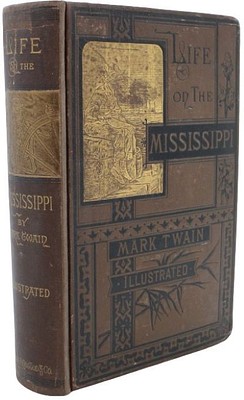History Of New England During Stuart Dynasty 1859
About Seller
522 South Pineapple Avenue
Sarasota, FL 34236
United States
Sarasota Estate Auction specializes in a wide variety of furniture, antiques, fine art, lighting, sculptures, and collectibles. Andrew Ford, owner and operator of the company, has a passion for finding the best pieces of art and antiques and sharing those finds with the Gulf Coast of Florida.
Two ways to bid:
- Leave a max absentee bid and the platform will bid on your behalf up to your maximum bid during the live auction.
- Bid live during the auction and your bids will be submitted real-time to the auctioneer.
Bid Increments
| Price | Bid Increment |
|---|---|
| $0 | $10 |
| $100 | $25 |
| $250 | $50 |
| $1,000 | $100 |
| $2,500 | $250 |
| $7,500 | $500 |
| $20,000 | $1,000 |
| $50,000 | $2,500 |
| $100,000 | $5,000 |
| $250,000 | $10,000 |
About Auction
Aug 5, 2023
Featuring a Lifetime Collection of Early American Pottery, a Fantastic Georg Jensen Sterling Tea Set - 23 OZT, Important Books and Ephemera, and Exquisite Estate Jewelry. Also including art from artists including Roy Lichtenstein, Camille Pissarro, Karel Appel, Victor Vasarely, and many more. Sarasota Estate Auction sarasotaestateauction@gmail.com
- Lot Description
History Of New England During The Stuart Dynasty. By John Gorham Palfrey, a three-volume set published by Little, Brown and Company in Boston from 1859 to 1864, the books are 3/4 bound, with five raised bands, burgundy and black labels with gilt titles, six gilt-ruled compartments with simple gilt devices, marbled boards and marbled endpapers with the bookplate of Augustus George Bullock, and all the edges are marbled. The first volume is probably an early second edition because the copyright date is 1858 and the date on the title page is 1859, but the other two volumes are first editions because the dates on the title pages and copyright pages match. Volume I has a two-page frontis map of New England from 1620 - 1644 and a copyright date of 1858, an eleven-page Preface, a list of illustrations (six, including the frontis maps), thirteen pages of Contents, 634 pages of text followed by a two-page Appendix; Volume II is dated 1860 on the title page and 1860 on the copyright page, with a three-page Preface, a list of illustrations (five), twelve pages of Contents, 634 pages of text and a six-page Appendix; Volume III has a two-page frontis map of New England in 1689, a date of 1864 on the title page and a copyright date of 1864, a five page preface, a list if illustrations (three), twelve pages of contents, 598 pages of text with notes, a six-page appendix, and a comprehensive index that runs from pages 607 to 648. John Gorham Palfrey (1796 - 1881) was an American clergyman and historian who served as a U.S. Representative from Massachusetts in the 1840’s. Born in Boston, Palfrey was a "charity student" at Phillips Exeter Academy in Exeter, New Hampshire, probably because his mother died when Palfrey was only six or seven years old, and he graduated from Harvard University in 1815, where he studied theology at Harvard’s Divinity School. He was a Whig who opposed slavery; he even freed sixteen slaves he inherited from his father, who was a successful Louisiana plantation owner. In Washington, he was a member of a small group of anti-slavery congressmen who met regularly, but his anti-slavery views alienated him from more conservative members of his district, such as the "Cotton Whigs," and in 1848 he was unsuccessful in his campaign for re-election on the Free-Soil ticket. In addition to opposing slavery, Palfrey advocated for the rights of free blacks traveling in the South and attempted unsuccessfully to remove provisions that limited suffrage to whites in Oregon's Territorial Constitution. After Lincoln was elected in 1861, Senator Charles Sumner helped Palfrey become Postmaster of Boston, a post he held for six years. He suffered a stroke in the mid-1870s and died in Cambridge, Massachusetts. His son, Francis Winthrop Palfrey, wrote a History of New England from the Revolution of the Seventeenth Century to the Revolution of the Eighteenth, so he was carrying on in his father’s footsteps. Augustus George Bullock (1847 - 1926) was the son of Gov. Alexander Hamilton Bullock, the twenty-seventh governor of Massachusetts. Augustus was born in Enfield, Connecticut and moved to Worcester, Mass. as a child. He became a director in the Norwich & Worcester railroad and was one of the original fifty founders of the Worcester Art Museum. The books measure 9 1/4 x 6 3/8 in. wide, the bindings are tight, the pages and maps are very clean, with just light rubbing along the edges of the boards. We’ve only found single volumes from the set available, and those were later printings. This is an early, complete, and very attractive three-volume set, with a unique view of New England history. #1641 #22
- Shipping Info
-
SHIPPING INFORMATION·
Sarasota Estate Auction IS NOT RESPONSIBLE FOR SHIPPING. All shipping will be handled by the winning bidder. Sarasota Estate Auction recommends obtaining shipping quotes before bidding on any items in our auctions. If you are interested in obtaining any information on local shippers, please send us an email and we will kindly send you a list of local shippers. Refunds are not offered under any circumstances base on shipping issues, this is up to the buyer to arrange this beforehand.
Premier Shipping, info@premiershipment.com
-
- Payment & Auction Policies
-
Available payment options
We accept all major credit cards, wire transfers, money orders, checks and PayPal. Please give us a call at (941) 359-8700 or email us at SarasotaEstateAuction@gmail.com to take care of your payments.
-
- Buyer's Premium



 EUR
EUR CAD
CAD AUD
AUD GBP
GBP MXN
MXN HKD
HKD CNY
CNY MYR
MYR SEK
SEK SGD
SGD CHF
CHF THB
THB































